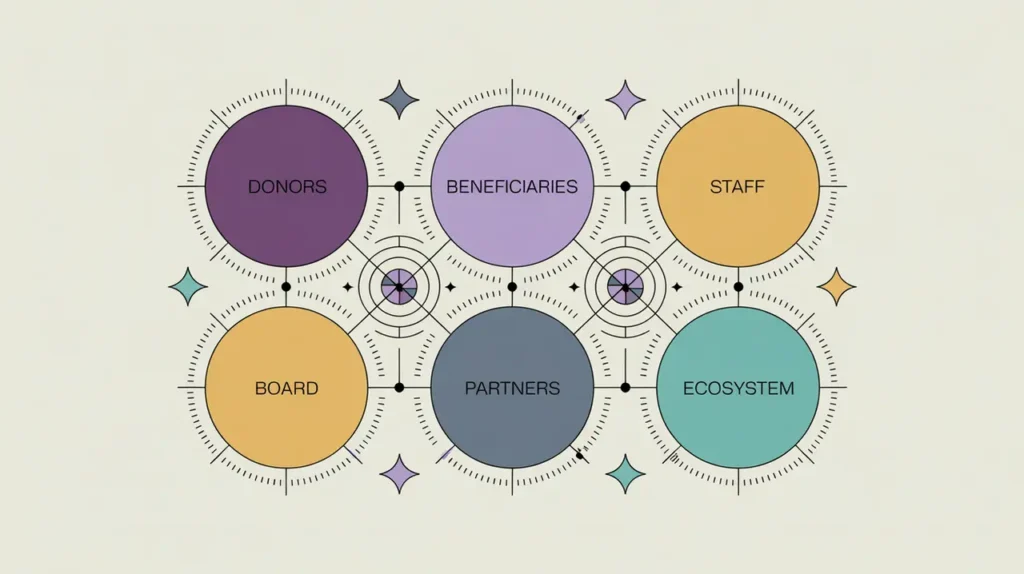What Does Executive Leadership & Vision Involve?
Executive leadership and vision guide the overall direction of a nonprofit. Executive leaders, such as CEOs or Executive Directors, are responsible for aligning mission with strategy, stewarding resources, and inspiring teams. Vision provides a long-term compass, as the articulation of what the organization seeks to become and achieve. Together, they ensure that daily decisions connect to purpose and long-term impact.
In practice, executive leadership involves setting priorities, managing senior teams, representing the organization publicly, and making decisions that balance opportunity with risk. Vision requires scanning the environment, anticipating future trends, and framing a compelling direction that motivates staff, donors, and partners. Strong executive leadership and vision integrate operations with aspiration, ensuring relevance and sustainability.
When executive leadership or vision is weak, organizations may drift, lose credibility, or miss opportunities for growth. When strong, they create alignment, attract resources, and build trust.
What Competencies Are Associated with This Role?
Executive leadership and vision require foresight, decisiveness, and influence. Competencies include:
- Defining and communicating a clear organizational vision
- Aligning strategy, operations, and culture with mission
- Leading senior teams and decision-making processes
- Balancing short-term realities with long-term goals
- Representing the organization to funders, policymakers, and the public
- Managing risk and guiding organizations through uncertainty
- Building trust with boards, staff, and external stakeholders
- Fostering innovation and adaptability
- Ensuring accountability and ethical leadership
- Mentoring future leaders and supporting succession planning
How Might AI and Automation Help This Role?
AI and automation can enhance strategic foresight and communication. Opportunities include:
- Predictive analytics to forecast trends and risks
- AI dashboards for real-time organizational performance data
- Generative AI to prepare vision statements, speeches, and strategy briefs
- Automated scenario modeling for strategic decision-making
- AI-assisted stakeholder mapping and influence analysis
- Tools for monitoring external trends in funding, policy, and public opinion
- Sentiment analysis of stakeholder feedback on organizational direction
- AI-supported succession planning and talent analytics
What Are the Roles by Experience Level?
Executive leadership is typically the top tier of nonprofit roles, but pathways build toward it:
- Entry: Executive Assistant, Junior Analyst – provide direct support, prepare briefings, conduct research
- Mid: Program Director, Strategy Officer – manage teams, align programs with strategy, contribute to vision setting
- Senior: Deputy Director, Chief of Staff – oversee major functions, integrate across departments, guide leadership priorities
- Executive: Executive Director, Chief Executive Officer – set vision, steward resources, represent the organization, guide long-term direction
How Transferable Are the Skills from This Role?
Executive leadership and vision skills transfer to high-level roles in any sector. Within nonprofits, they pave the way for governance, board service, and policy influence. Beyond nonprofits, they align with executive positions in corporations, government, education, and international agencies. The ability to articulate vision, mobilize teams, and steer institutions is among the most universally valued leadership capacities.







